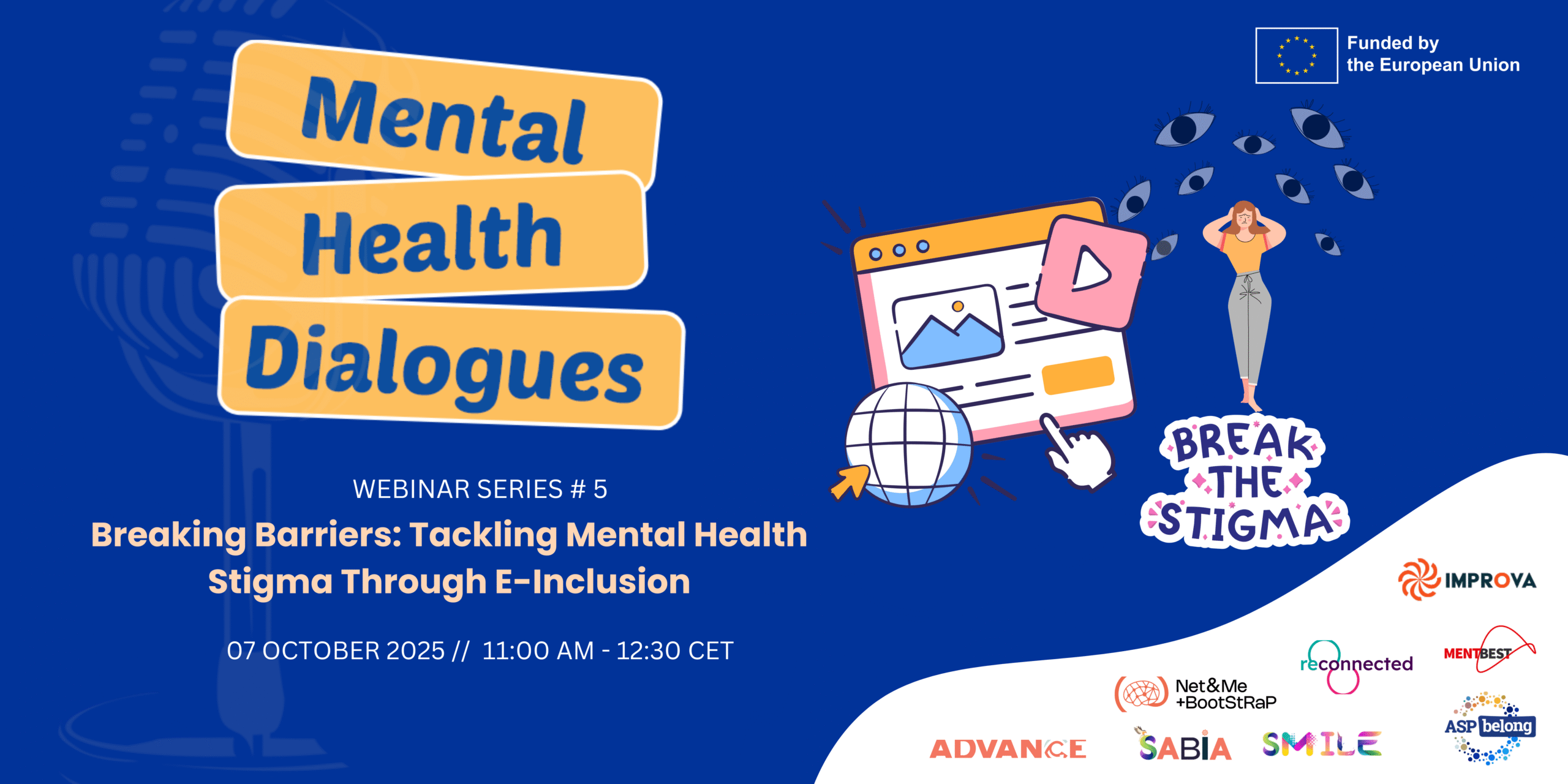Reconnected Project Hosts 5th Mental Health Dialogue: Tackling Mental Health Stigma Through E-Inclusion
The Reconnected Project recently hosted the fifth webinar in its Mental Health Dialogue Series, moderated by Annet Kleiboer and an Opening Speech by Athanasios Rogdakis from European Health and Digital Executive Agency (HaDEA). The event brought together representatives from seven “sister projects” under the Horizon Europe programme, each exploring how digital innovation can make mental health care more inclusive and stigma-free.
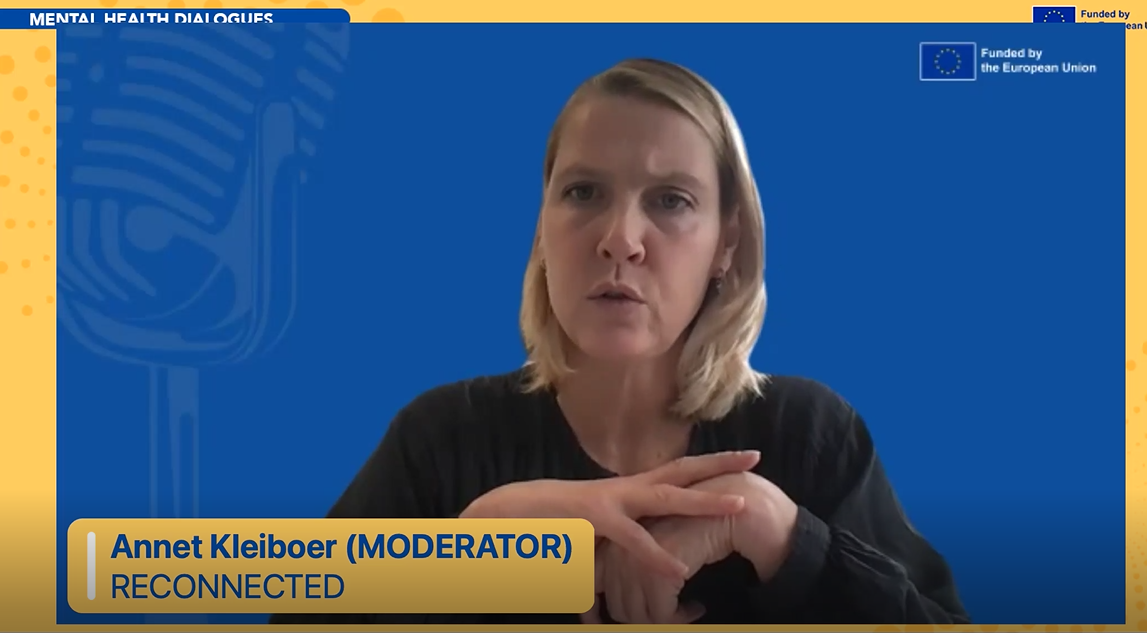
We are looking back to a rich discussion revealing both the promise and the limits of technology in addressing mental health stigma, emphasizing the continued need for human connection, cultural sensitivity, and equitable access.
Summary of the Discussions
Question 1: How is mental health stigma relevant to your project’s vulnerable group?
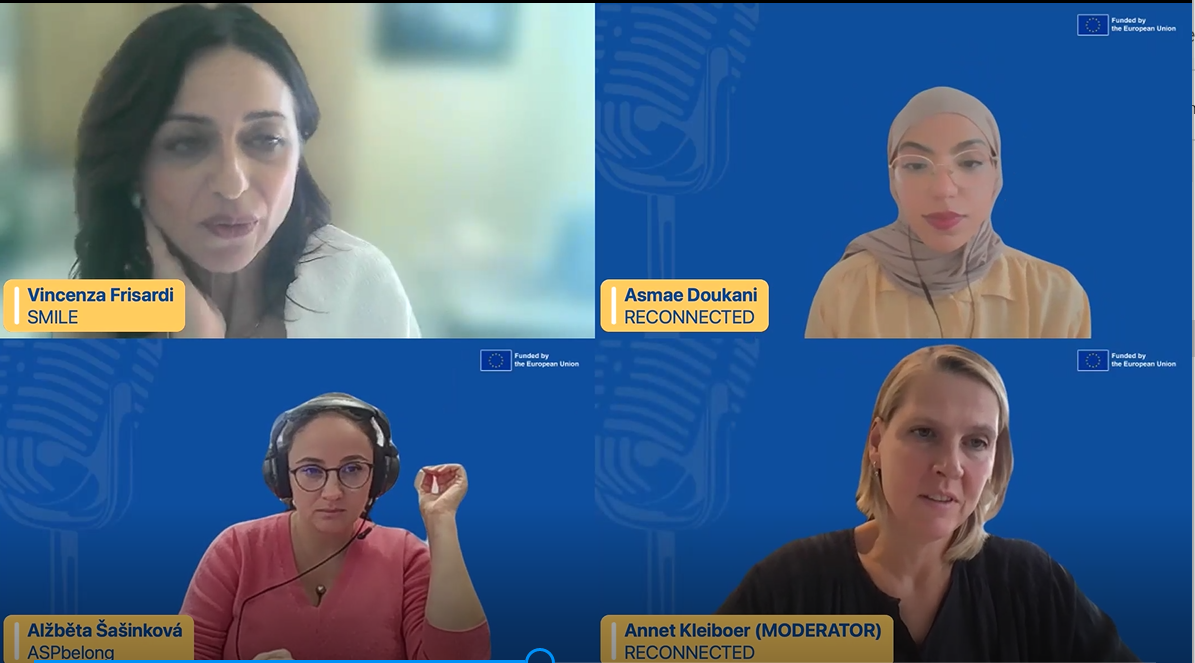
ASPbelong
Alžběta from ASPbelong project described how ASPBelong works with young people and teachers to create digital learning environments that reduce stigma through co-creation and creative workshops. By involving adolescents directly in the design process, the team ensures that digital tools “speak their language” and feel safe to use.
“Technology is a native language for young people. When we speak it with them — not at them — we help normalize their emotions.” – Alžběta Šašinková
Reconnected
Asmae shared how her team within the RECONNECTED project focuses on migrant communities, a group often facing digital exclusion and cultural stigma around mental health. By involving these communities in co-design and adapting content culturally and linguistically, RECONNECTED aims to make digital tools accessible, trusted, and relevant.
SMILE
Vincenza explained how SMILE empowers young people to use gamified self-assessment and wellbeing tools. Framing the content around wellbeing rather than “mental illness” reduces internalized stigma and encourages early engagement.
“We normalize everyday distress — but we must avoid trivializing serious symptoms.” – Vincenza Frisardi
Question 2: Can e-inclusion help decrease stigma and how?
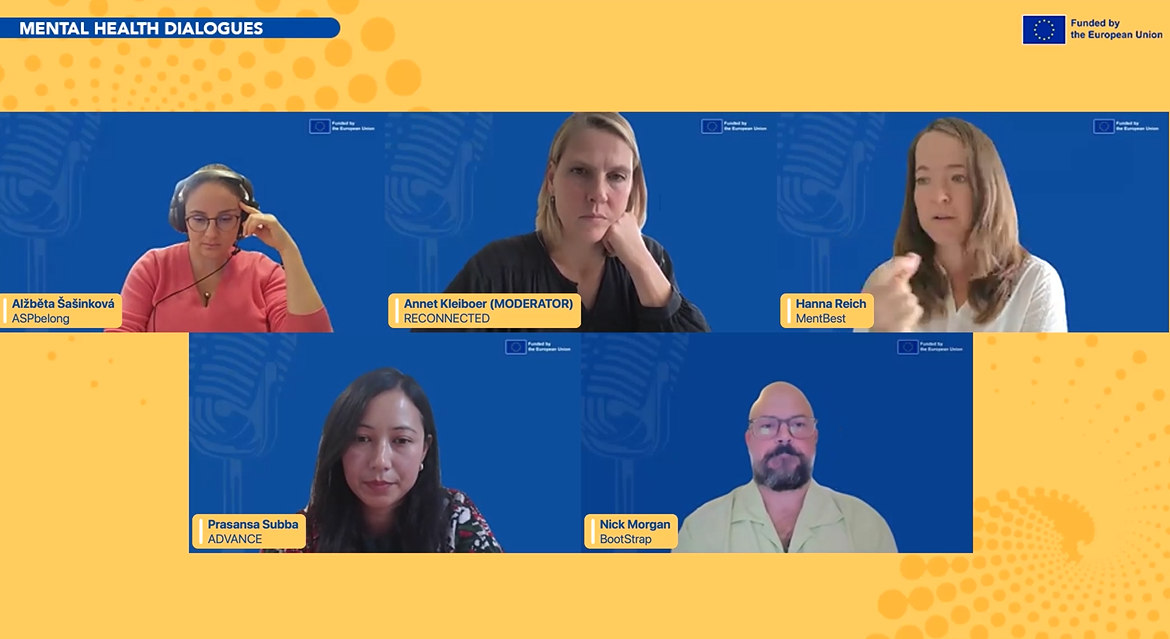
MentBest
Hanna emphasized that inclusive digital access can increase participation but warned that digital inclusion must be matched with ethical design and data transparency to maintain trust. She highlighted the need for explainable AI and clear communication around data use to avoid new forms of exclusion.
Advance
Prasansa described how ADVANCE uses blended interventions self-paced online modules combined with weekly human check-ins.
“Digital tools alone can’t remove stigma. But when paired with empathy and real conversation, they make help-seeking safer and more approachable.” – Pransana Subba
ASPBelong
Building on her earlier remarks, Alžběta cautioned that technology can unintentionally create new barriers for example, teachers who feel unprepared to discuss difficult emotional topics. Her team now includes training for educators to ensure they feel supported too.
Bootstrap
Nick offered a candid perspective: access doesn’t equal acceptance.
“Young people might use mental health apps in secret because they’re still ashamed. Inclusion improves access — but stigma remains unless we change the language and culture around mental health.” – Nick Morgan
Question 3: Can low-threshold, “normalizing” interventions help and what are the risks?
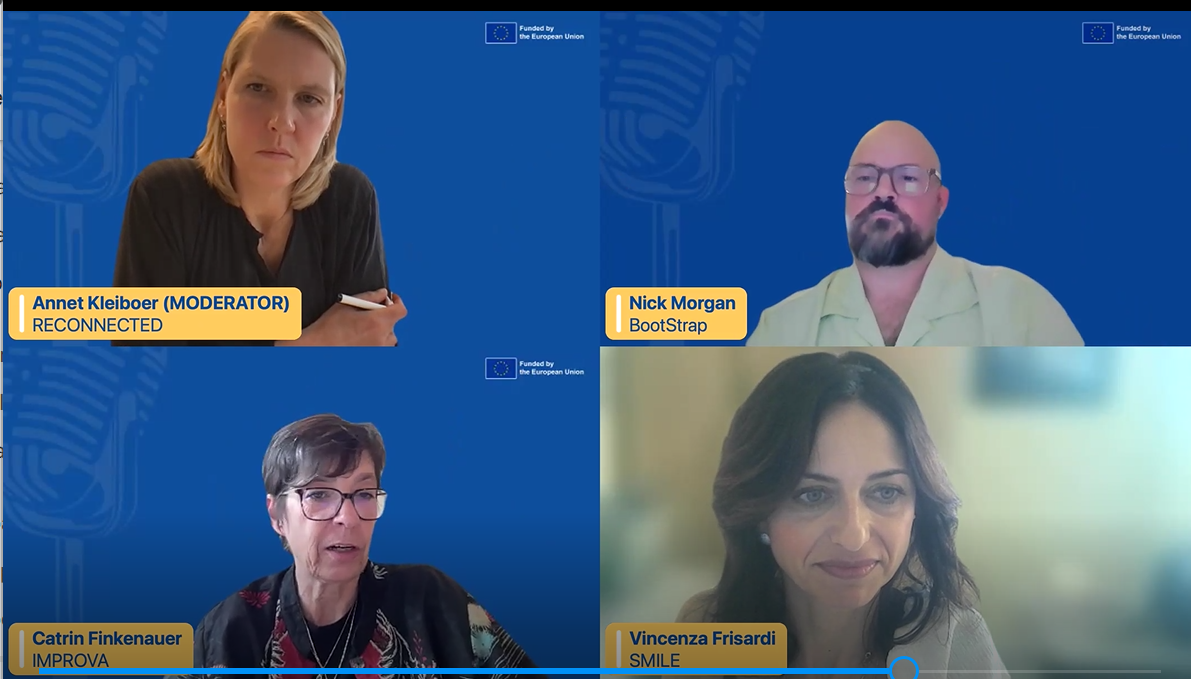
Improva
Catrin shared that digital tools can encourage early prevention and reach more adolescents but that benefits often favor those from higher socioeconomic backgrounds. She warned of the “rich get richer” effect, where vulnerable youth may still disengage due to motivation or literacy gaps.
“Digital care works best when connected to real-life relationships — a hug, a conversation, a teacher who asks how you are.” – Catrin Finkenauer
SMILE
Vincenza expanded on the concept of low-threshold access: Young people can engage privately and safely, but over-normalizing distress risks delaying professional help. SMILE integrates clear referral prompts and transparency about the app’s limits to ensure safety.
Bootstrap
Nick agreed, adding that e-tools should act as a preventive bridge, not a replacement for therapy.
“You wouldn’t fix a broken leg with an app so we shouldn’t expect digital tools to heal deep psychological wounds. They can, however, start important conversations earlier.” – Nick Morgan
Question 4: Are inclusive digital interventions really possible?
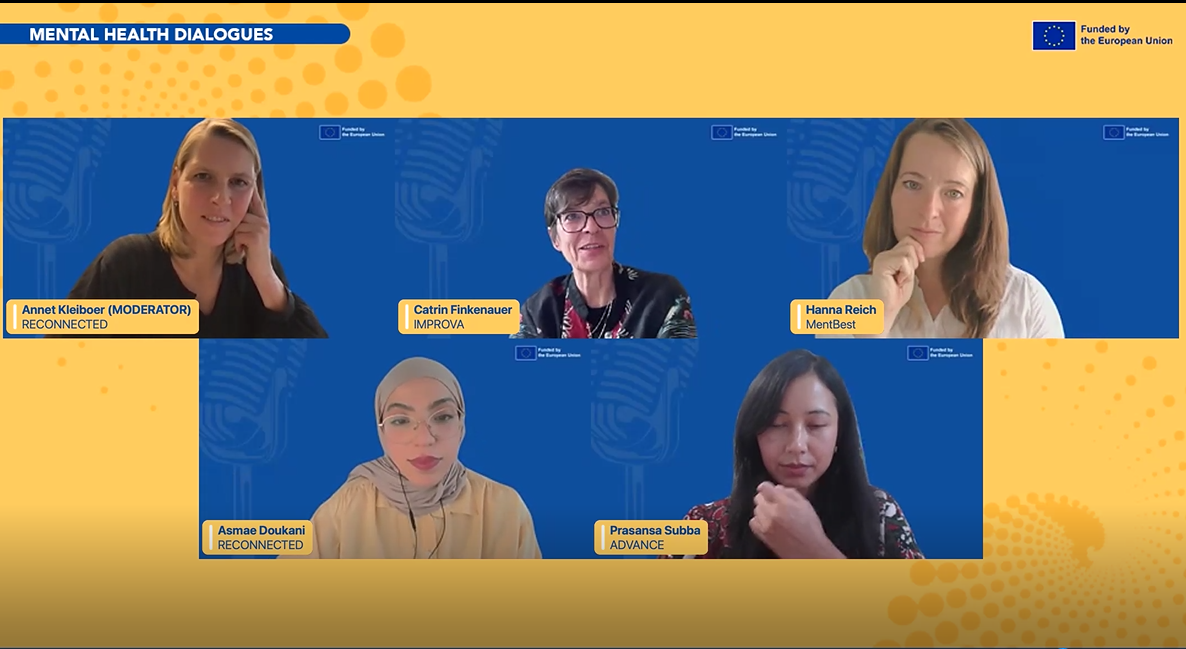
Reconnected
Asmae highlighted the digital divide, especially among migrant and refugee populations, who may face unstable internet access, language barriers, or lack of ID documentation.
“Inclusion requires more than online access. It’s about cultural relevance, trust, and the ability to connect with others.” – Asmae Doukani
Improva
Catrin echoed this point, stressing that digital interventions can complement, but not replace interpersonal support.
MentBest
Hanna focused on the importance of digital literacy and data protection. Many users, including older adults or teachers, hesitate to use mental health tools due to privacy concerns. Building trust through transparency is key to inclusion.
Advance (Prasansa)
Prasansa concluded by reminding participants that access ≠ inclusion.
“To be truly inclusive, we must apply a human-centered lens, ask who is left out — and redesign until everyone feels invited.” – Pransana Subba
Key Lessons from the 5th Webinar
- Digital tools expand access, but human connection remains irreplaceable.
- Co-creation with users helps tools reflect real needs and reduce stigma.
- Language matters: framing interventions around wellbeing encourages engagement.
- Digital inclusion ≠ equity: addressing literacy, access, and culture is essential.
- Ethical design and transparency build trust and long-term engagement.
Continuing the Conversation
As the Reconnected Project and its sister initiatives move forward, one message stands clear:
Technology can support mental health, but it cannot replace compassion, community, or connection.
The Mental Health Dialogue Series continues every four months, offering a collaborative platform for EU researchers, practitioners, and citizens to shape the future of inclusive digital mental health care.
Join the next webinar and be part of the dialogue. Pre-Register here: https://ec.europa.eu/eusurvey/runner/JointWebinar2024
Want to learn more about our sister projects? Visit their websites:
